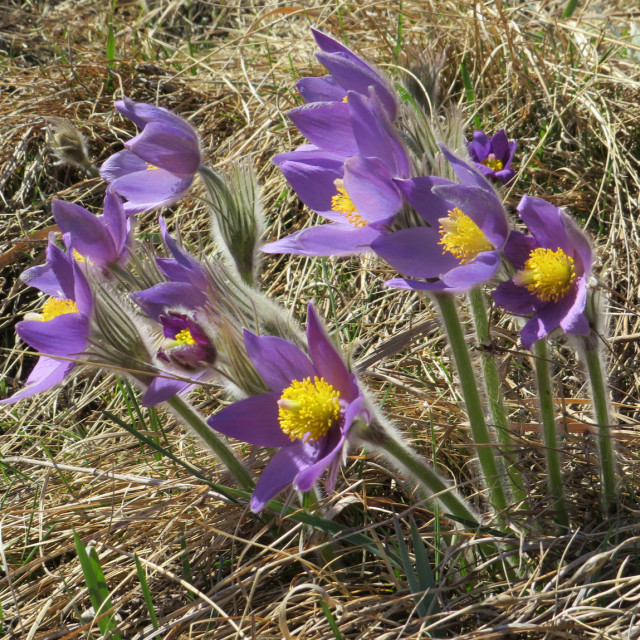COMMON NAME
eastern pasqueflower
SCIENTIFIC NAME
Pulsatilla patens
ALSO KNOWN AS
American pasqueflower, Anemone patens, prairie crocus, cutleaf anemone
Plant family
Buttercup (Ranunculaceae)
Plant group
Wildflowers and Herbs
Eastern pasqueflower is a small, native, perennial wildflower that is often one of the first plants to bloom in North America.
191 reports
65+
OBSERVERS
191+
OBSERVATIONS
Identification hints
A distinctive feature of American pasqueflower is the feathery, silky fruiting head. The leaves, flowers, and stalks are all covered with silky silver hairs. The flowers are generally a light purple to white or pale yellow color. The leaves are often described as "finely dissected". In moist areas in mountains, you can also see the western pasqueflower which is larger, has white flowers, and more finely divided leaves.
Did you know?
The common name refers to the Easter-time flowering throughout much of its range (pascal is Latin for Easter). This species and its relatives have been used as herbal medicines but can be toxic. Eastern pasqueflower is the state flower of South Dakota.
DISTRIBUTION IN TH U.S.
Alaska
,
Colorado
,
Iowa
,
Idaho
,
Illinois
,
Kansas
,
Michigan
,
Minnesota
,
Montana
,
North Dakota
,
Nebraska
,
New Mexico
,
South Dakota
,
Texas
,
Utah
,
Washington
,
Wisconsin
,
Wyoming
HABITAT
Widely distributed, the eastern pasqueflower is found in open areas and grasslands of the Midwest and Great Plains. Its distribution also reaches west to the Cascades in Washington and Oregon, northward through Canada all the way to Alaska. It prefers dry to moderate conditions and thrives on hillsides, prairies, and cliffs.
ATTRIBUTES
Leaves
A whorl of three palmately compound stalkess leaves can be found just below the flower, and are covered in silky hairs. Other leaves emerge from the base of the plants (basal leaves) after the flowers are done blooming.
Flowers
Single flowers are showy, purple to bluish in colore but sometimes white or pale yellow. The open bell-shaped flowers have 5 to 7 petal-like sepals surrounding numerous yellow stamens in the center of the flower. Flowers are typically 1-2 inches in diameter.
Fruits
Fruits of the eastern pasqueflower are pinkish to purple feathery or cottony-looking seed heads. Each seed is attached to a feathery plume which is the remains of the style and facilitates wind dispersal. Seeds are brown and 3-5 mm long, covered in long white hairs, and elongated ellipsoid in shape.
Bloom Time
This is one of the earliest herbaceous plants to bloom in the spring. Depending on location, it blooms from late March to early June.
See Menu
Budburst is a project of the
Chicago Botanic Garden
One of the treasures of the
Forest Preserves of Cook County
Creative Commons
BY-NC-SA 4.0
- 2021 Chicago Botanic Garden. All Rights Reserved.
- Terms of Use
- Privacy Policy
- Data Sharing and Citation Policies
- 2021 Chicago Botanic Garden. All Rights Reserved.



